In Chemical Laboratory of Food Analysis and Nutritional labelling , in Environmental Laboratory, in Quality Control Laboratory, and in Microbiological Laboratory of the company, tests carried out in various food and drinks, such as:
Food
- Milk and dairy products (eg yogurt, halloumi cheese, ice cream, etc.)
- Meat, meat products and sausages
- Vegetables, Fruits and Juices
- Bakery and Confectionery products
- Cereals and Pasta
- Nuts
- Spices and herbs
- Alcoholic beverages and carbonate drinks
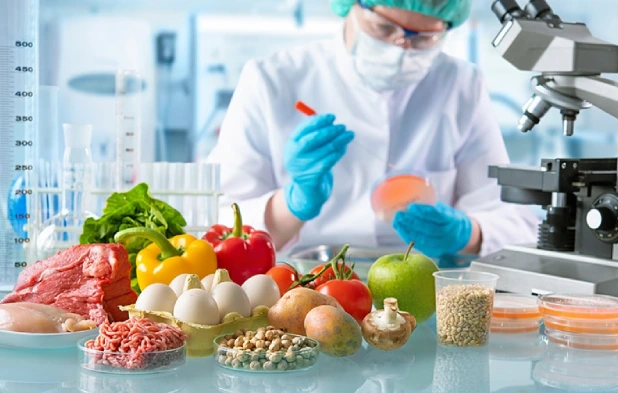
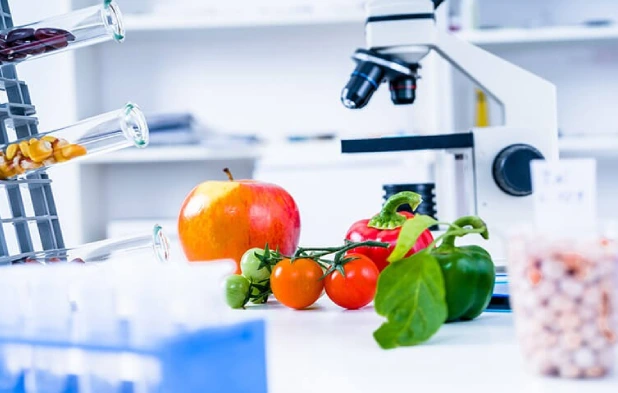
The physicochemical analyses conducted on various categories of food and drinks are:
- Nutritional labelling
EU Regulation 1169/2011 establishes the compulsory indication of the “Food Declaration” on packaged foods determines the content of this declaration and regulates how to indicate on the label the nutritional information, both compulsory and voluntary.
The nutritional declaration must obligatorily contain the energy value, proteins, fats & saturated fats, carbohydrates, sugars, and sodium (salt).
The Chemical Laboratory of Food Analysis and Nutritional labeling provides analyses for nutritional labelling of food where moisture, ash, protein, total fat, saturated fat, carbohydrates & sugars and salt.
- Vitamins and Minerals
The Chemical Laboratory of Food Analysis and Nutritional labelling provides analyses for several vitamins and minerals depending on the type of the sample and customer requirements.
- Food additives
In Chemical Laboratory of Food Analysis and Nutritional labelling and in Quality Control Laboratory of the company, tests for food additives are carried out.
Depending on their function food additives may be natural or synthetic substances that are added to foods to provide them with special technological benefits.
In the European Union there are three guidelines defining:
a) Authorized additives (and the ban of others)
b) The foods to which may be used additives and
c) The maximum allowable concentration levels.
The chemical parameters provided by the laboratory are the following:
- Ascorbic acid
- Benzoic acid
- Boric acid
- Citric acid
- Sulphites
- Nitrates
- Nitrite
- Propionic acid
- Sorbic acid
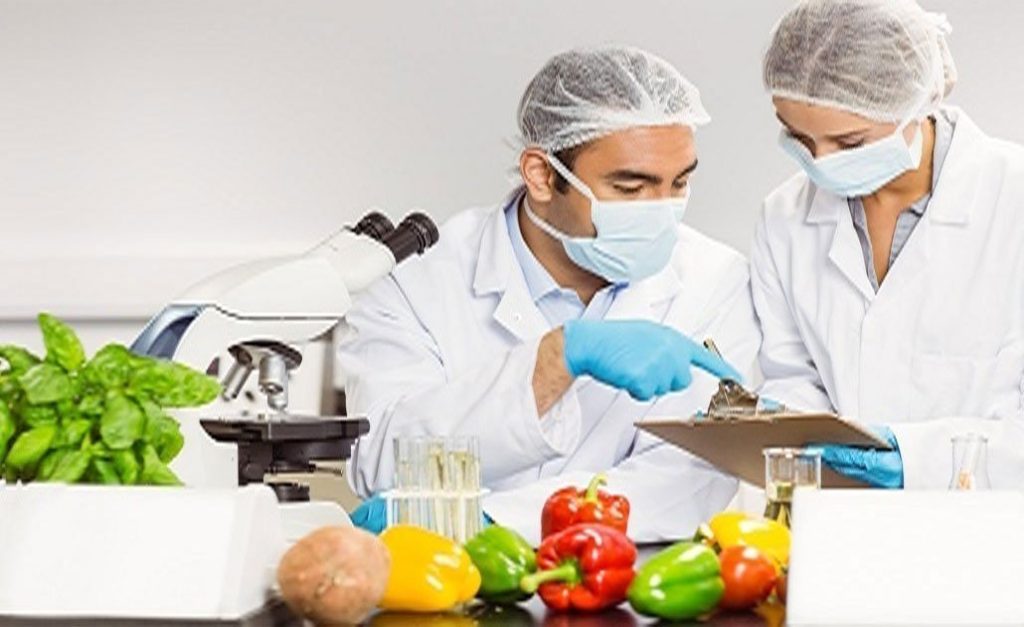
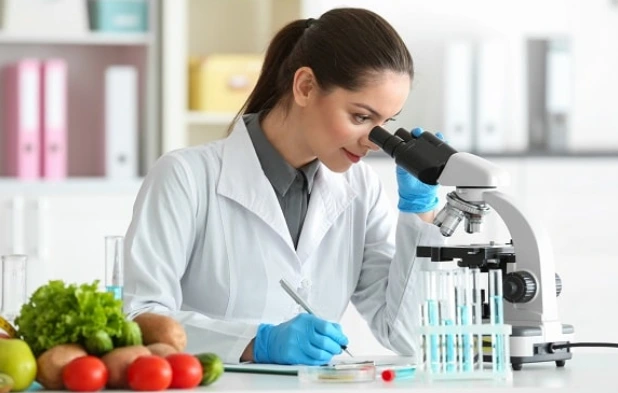
Contaminants and toxins
Contaminants are dangerous substances which appear in food at various stages during production, packaging, transportation or maintenance. They can also be a consequence of environmental pollution.
The European Union has established measures to minimise the presence of contaminants in food, since it has an adverse impact on the quality of foodstuffs and may create risks to human health.
The European Union measures concern to the following contaminants: Histamine, mycotoxins (aflatoxins, ochratoxin A), metals (cadmium, lead, copper, mercury), and nitrates.
- Pesticide residues
Our laboratory accepts samples for testing of active pesticides, depending on the type of food and customer requirements.
- Migration of Chemicals
The packaging materials currently used for food can be: metals, ceramics, glass, paper, cellulose products – cellophane, plastic – rubber and others.
According to the EU Regulation 1935/2004 all material and articles intended to come in contact with food must not transfer their constituent to food in quantities which could endanger human health or bring about an unacceptable change in a composition of the food or deterioration in the organoleptic characteristics.
Our laboratory accepts samples of food packaging materials for overall and specific migration in accordance with Directive EU 1935/2004:
- Overall migration into simulant A (water)
- Overall migration into simulant B (acetic acid solution)
- Overall migration into simulant C (ethanol)
- Overall migration into simulant D (vegetable oil, isooctane)
- Microbiological analyses
The Microbiological Laboratory provides all the microbiological tests that are required for the food sector, including both control of safety and control of hygiene criteria, as the applicable law requires them. There is even a full range of microbiological tests for pathogens, indicator microorganisms and microorganisms of technological interest:
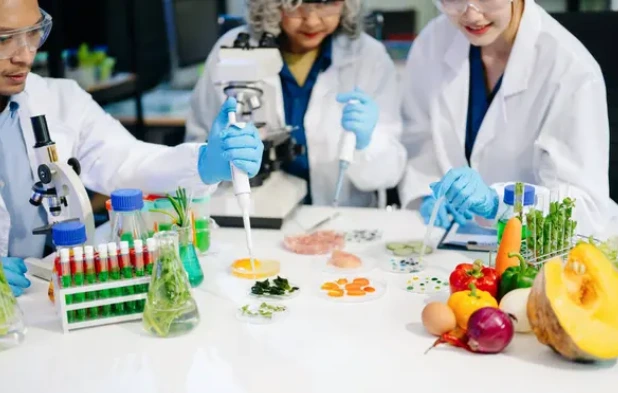
| MICROORGANISM | METHOD |
| *Bacillus cereus | ISO 7932 |
| *Clostridium perfringens | ISO 7937 |
| *Enterobacteriaceae | ISO 21528-2 |
| Escherichia coli (M.P.N.) | ISO 7251 |
| *Escherichia coli (Colony Count) | ISO 16649-2 |
| Escherichia coli (M.P.N.) | ISO 16649-3 |
| *Listeria monocytogenes (Detection) | ISO 11290-1 |
| Listeria monocytogenes (Enumeration) | ISO 11290-2 |
| *Micro-organisms enumeration | ISO 4833 |
| *Salmonella spp. | ISO 6579 |
| *Staphylococcus coagulase positive | ISO 6888-2 |
| Total coliforms @ 30°C | ISO 4832 |
| Anaerobic Sulfite Reducing Bacteria | ISO 15213 |
| Lactic acid bacteria | ISO 15214 |
| Pseudomonas spp. | ISO 13720 |
| Psychrotrophic microorganisms | ISO 17410 |
| Yeasts and Moulds | ISO 21527-1 |
| Yeasts and Moulds | ISO 21527-2 |
| Vibrio parahaemolyticus | ISO 21872-1 |
| Vibrio cholerae | ISO 21872-1 |
| Campylobacter spp | ISO 10272-1 |
|
Escherichia coli 0157:H7 Microbiological stability |
ISO 16654 |
